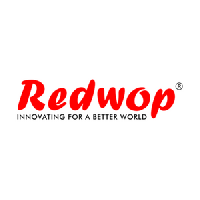Coatings Failure Analysis: Causes and Process Improvements

Posted by Redwop Chemcials
from the Real Estate category at
27 Oct 2022 06:39:22 am.
Coatings are comprised of a complex mixture of raw materials and are applied to various substrates, dried, and cured to provide protection from destructive elements—e.g., moisture, heat, wind, cold, humidity, oxidization, ultra-violet, and other environmental factors that breakdown substrate integrity over time. They are available in a variety of forms, including:
- Lacquers
- Paints
- Powders
- Primers
- Sealers
- Stains
- Varnishes
- Static and electrostatic discharge (ESD) control
- Corrosion resistance
- Flame retardancy and heat resistance
- Weather resistance
- Waterproofing and water resistance
Causes of Coating FailuresThere are four common causes of coating failures:
Improper or Inadequate Surface PreparationProper bonding between the coating and the substrate requires proper surface preparation. If bonding does not occur or is weak due to inadequate surface preparation, a variety of failures or defects may result, including blistering, cratering, crawling, detaching, improper wetting, orange peeling, and uneven gloss.
Improper or Inadequate Application EnvironmentA broad range of environmental factors during application can also cause coating failures. Variances in air purity, cleanliness, humidity, and temperature often reduce the effectiveness of the bond or cause uneven spreading. Evidence of application environment issues shows up in the form of blistering, wetting problems, solvent popping, and cratering.
Improper or Inadequate Application TechniqueOne of the factors taken into account during product formulation is the application technique. The application of most liquid formulas includes spraying, brushing, dipping, or rolling, but each of these application methods also requires specific techniques and equipment. The failure to apply coatings using the results of their designed technique in orange peeling, sagging, or running.
Improper FormulationA coating’s formulation must be tailored to the manufacturing process and the product’s end-use environment. If not formulated properly, coatings are apt to fail even when proper surface preparation, application environment, and application techniques are present. Common characteristics of formulation failures include alligatoring, chalking, checking, cracking, erosion, and mud-cracking.
Some examples of using the wrong coating formulation for a product, include:
Cure TimeWhen choosing a coating formulation, the failure to consider adequate curing time or temperature regarding production speed and environment results in inadequate curing or disruptions in the production process. If your finished products are stacked after painting and are sticking together (blocking), it may be time to reformulate for a quicker cure.
Too Much MaterialImproperly formulated coatings often make it necessary to apply thick layers of material or repeat the coating process several times, costing both time and money. In addition, when coatings are applied at a greater film thickness than the specification calls for, it can lead to adhesion issues.
Over-engineered ProductOver-engineered coatings provide properties that are of no value to the manufacturer, often at an unnecessary additional cost.
Under-engineered ProductAn under-engineered coating does not meet the production and performance requirements of the manufacturer, resulting in diminished product quality and customer satisfaction.
Preventing Coatings FailuresBy making improvements to the coating process, businesses can reduce the likelihood of coating failures and defects, such as:
- Chalking: the development of a dusty material on the coating’s surface
- Erosion: the reduction or elimination of the coating when exposed to environmental elements
- Blistering: the development of small to large bubbles beneath the surface of or within the coating
- Orange peeling: the presence of convex or concave surface texture on the coating surface
- Pin-holing: the presence of small holes through the coating, exposing the surface of the substrate
- Undercutting: the rupturing of the coating due to the presence of corrosive byproducts from the substrate
Improving Surface PreparationAdequate surface preparation helps achieve a strong bond between the coating and the substrate. The removal of contaminants facilitates proper bonding by eliminating compounds that might contribute to coverage failures, improper wetting, blistering, and other adhesion issues. Operators should understand the type of surface contaminants likely to be present in their process and tailor their precleaning protocols to address these contaminants.
Implementing Process and Equipment AuditsLike any other equipment, paint guns, hoses, spray tips, and other coating equipment wear down over time. Having a standard process for auditing the condition of your paint line can go a long way in preventing issues related to improper coverage or contamination during application.
Encouraging Operator FeedbackThose involved in the process of applying coatings can provide valuable feedback concerning any challenges related to coating application or curing. Using this feedback, we can adjust coating formulas and application procedures to better suit their production processes.
Using the Proper FormulationCoating formulation should remain flexible. As facilities make changes to equipment, processes, and materials, coating formulations must adapt to these changes to continue to perform as expected. The coating supplier should work with organizations to custom formulate coatings as their requirements evolve.
Contact Redwop Chemicals TodayRedwop takes pride in being a spearheading protective coatings provider offering a whole gamut of protective coatings that fulfill various needs of its clientele across the world. Being an eminent exporter of protective coatings, our products adhere to the stringent quality standards applicable across various industries worldwide Redwop believes in providing the best products and passing on as many benefits as possible to our clients.
At Redwop Chemicals, we draw upon our extensive knowledge of standard and custom coating formulations to match the right coatings to the right surfaces and provide the best coating process for each application. In doing so, we help minimize the risk of coating failures.
To learn more about our coating solutions, contact us today.
Tags: Redwop Chemicals, Best Constructions Chemicals Company in India, Adhesive Manufacturing Solutions, Tiles Adhesive, Anchoring Grout, Waterproofing manufacturer in India
0 Comments



